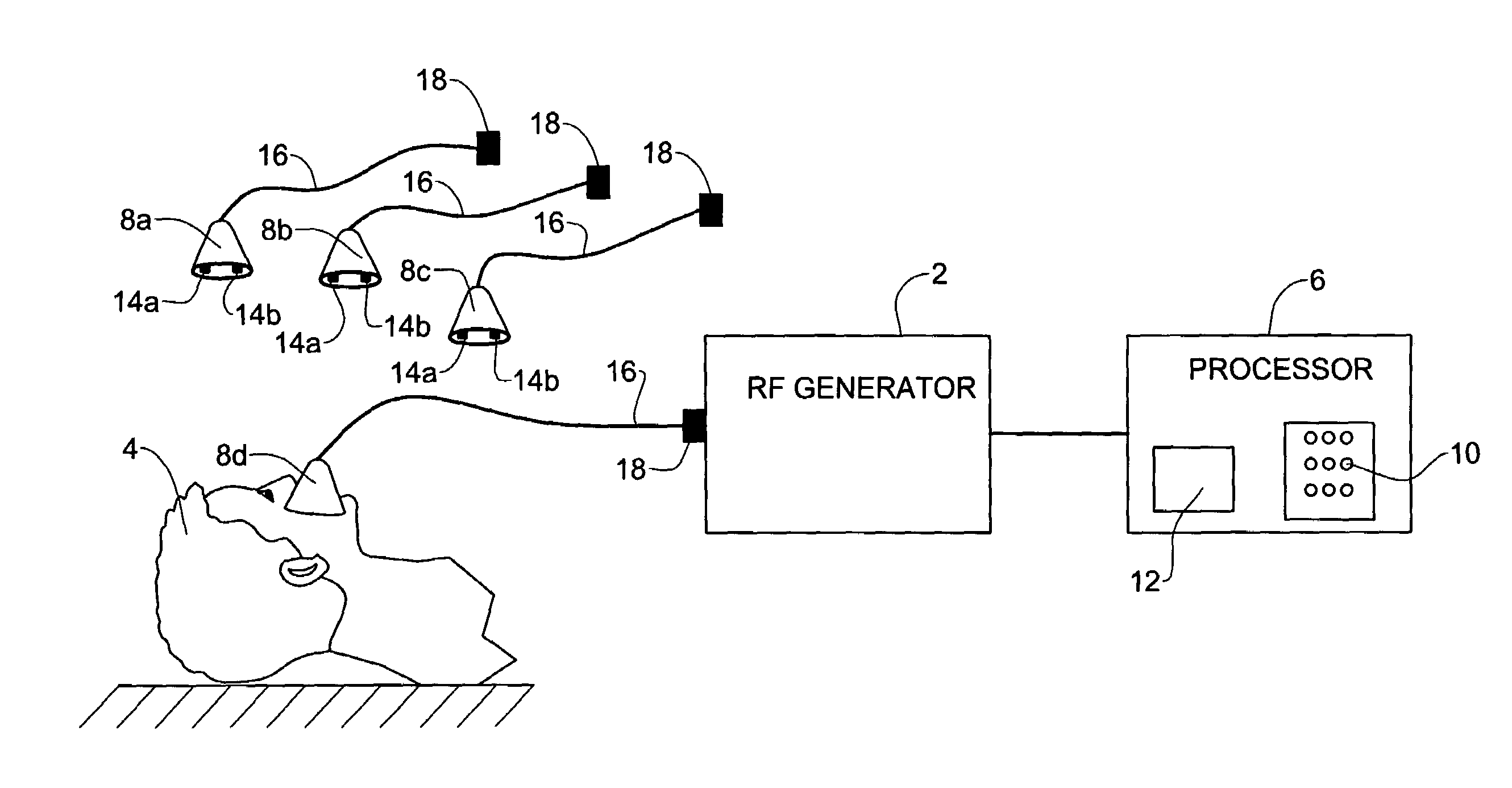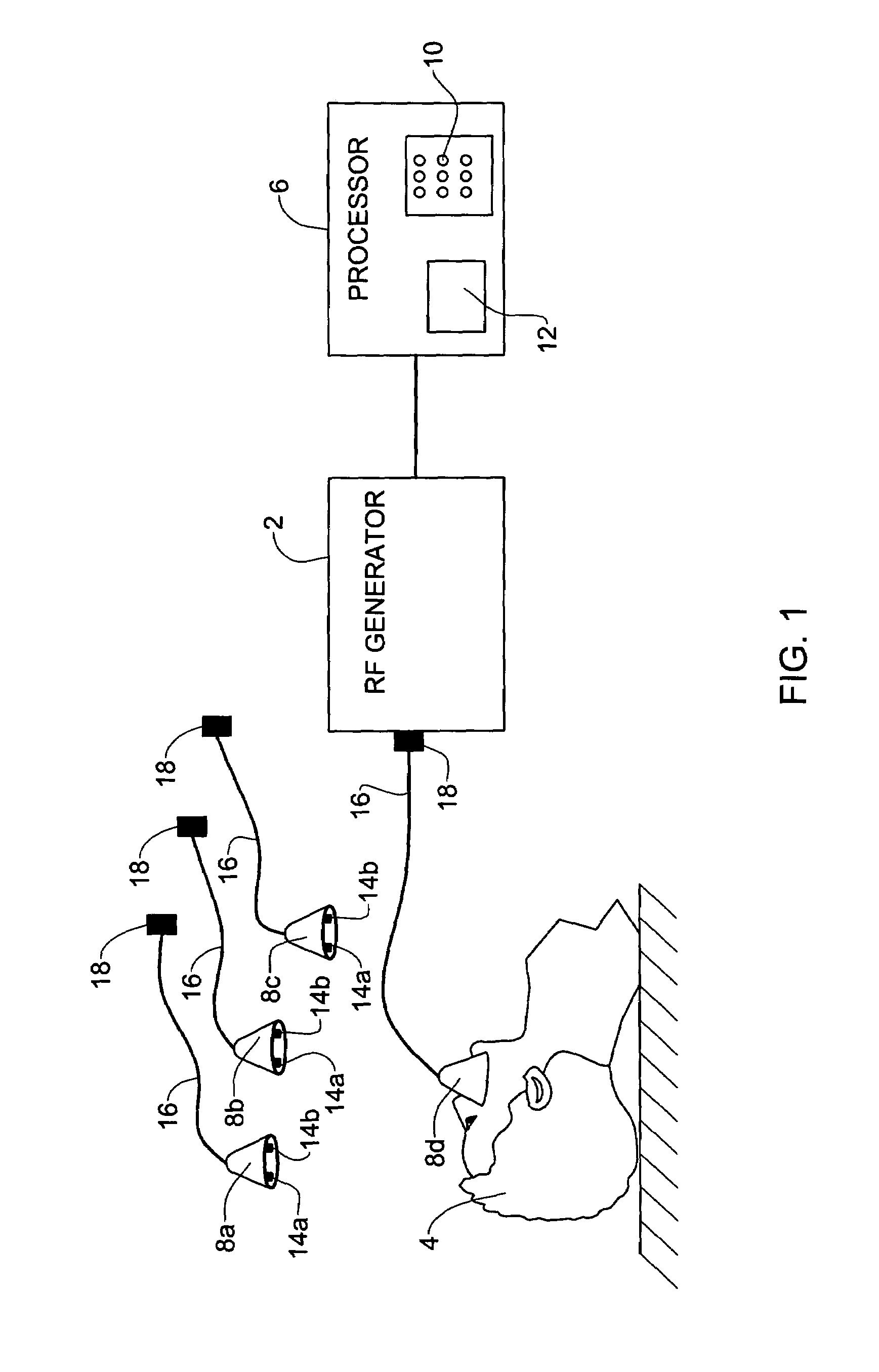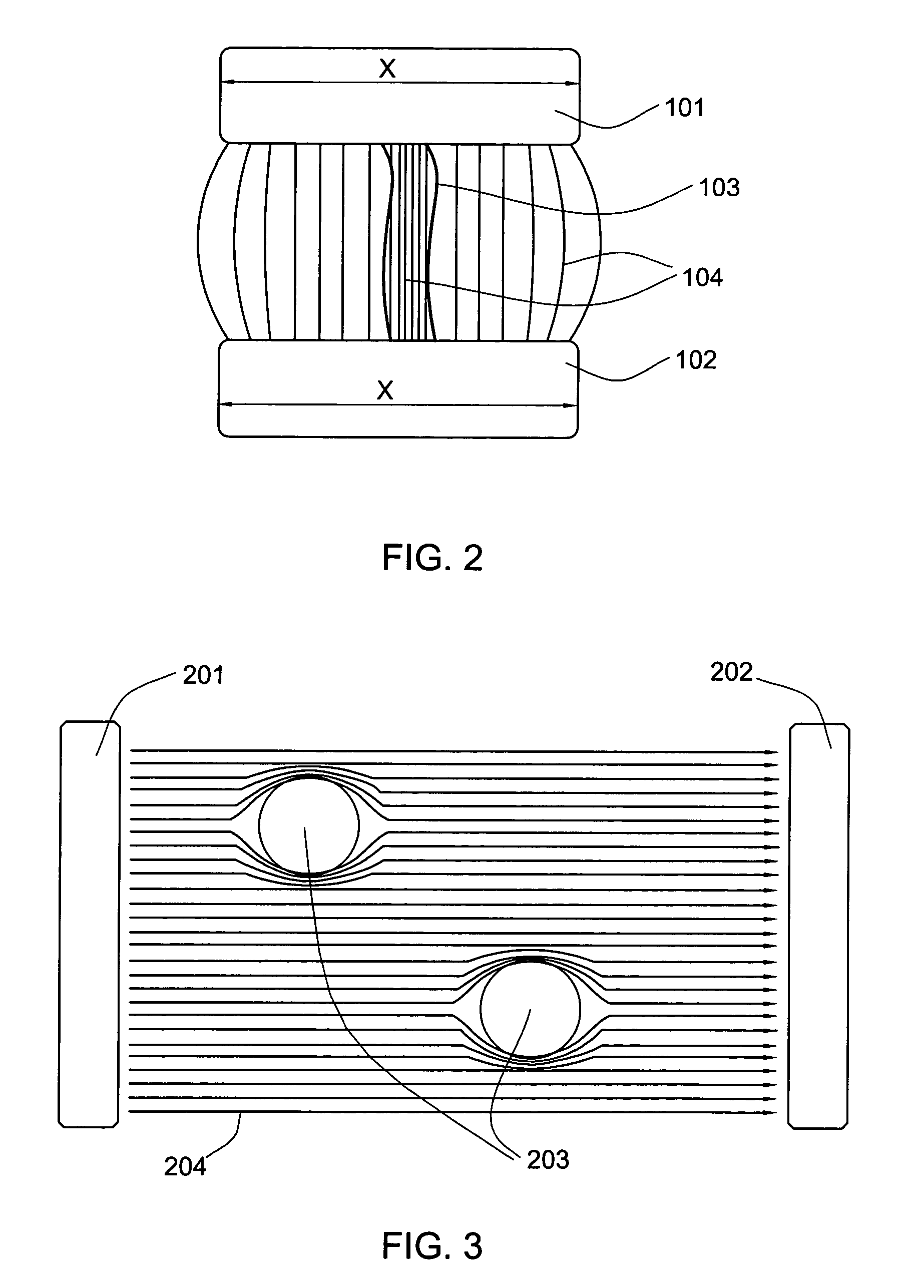Method and system for selective electro-thermolysis of skin targets
a skin target and electro-thermolysis technology, applied in the field of skin treatment, can solve the problems of ineffective gray hair treatment, inability to sufficiently heat the target, and limited efficiency of dark skin application of optical energy to destroy the targ
- Summary
- Abstract
- Description
- Claims
- Application Information
AI Technical Summary
Benefits of technology
Problems solved by technology
Method used
Image
Examples
examples
Treatment of Blood Vessel
[0024]FIG. 2 shows schematically the electrical current distribution in a skin region including a blood vessel 103, when electrodes are applied to regions 101 and 102 of the skin. As shown in Table 1 above, blood has a three-fold higher electrical conductivity than wet skin. Thus, electrical current 104 through the blood vessel 103 is higher than in the surrounding skin, and hence the heating of blood vessel 103 is also higher than in the surrounding skin. At the periphery of edges of the contact regions 101 and 102, the electrical current is diverges, a phenomena known as “the boundary effect”.
[0025]For the cosmetic removal of blood vessels, typically vessels at a depth of up to 2.5 mm are targeted. The distance between the electrodes should be larger than twice the depth of penetration (i.e. a separation of over 5 mm). The length of the contact regions 101 and 102 perpendicular to the blood vessel (the distance x in FIG. 2), should be much longer than the ...
PUM
 Login to View More
Login to View More Abstract
Description
Claims
Application Information
 Login to View More
Login to View More - R&D
- Intellectual Property
- Life Sciences
- Materials
- Tech Scout
- Unparalleled Data Quality
- Higher Quality Content
- 60% Fewer Hallucinations
Browse by: Latest US Patents, China's latest patents, Technical Efficacy Thesaurus, Application Domain, Technology Topic, Popular Technical Reports.
© 2025 PatSnap. All rights reserved.Legal|Privacy policy|Modern Slavery Act Transparency Statement|Sitemap|About US| Contact US: help@patsnap.com



